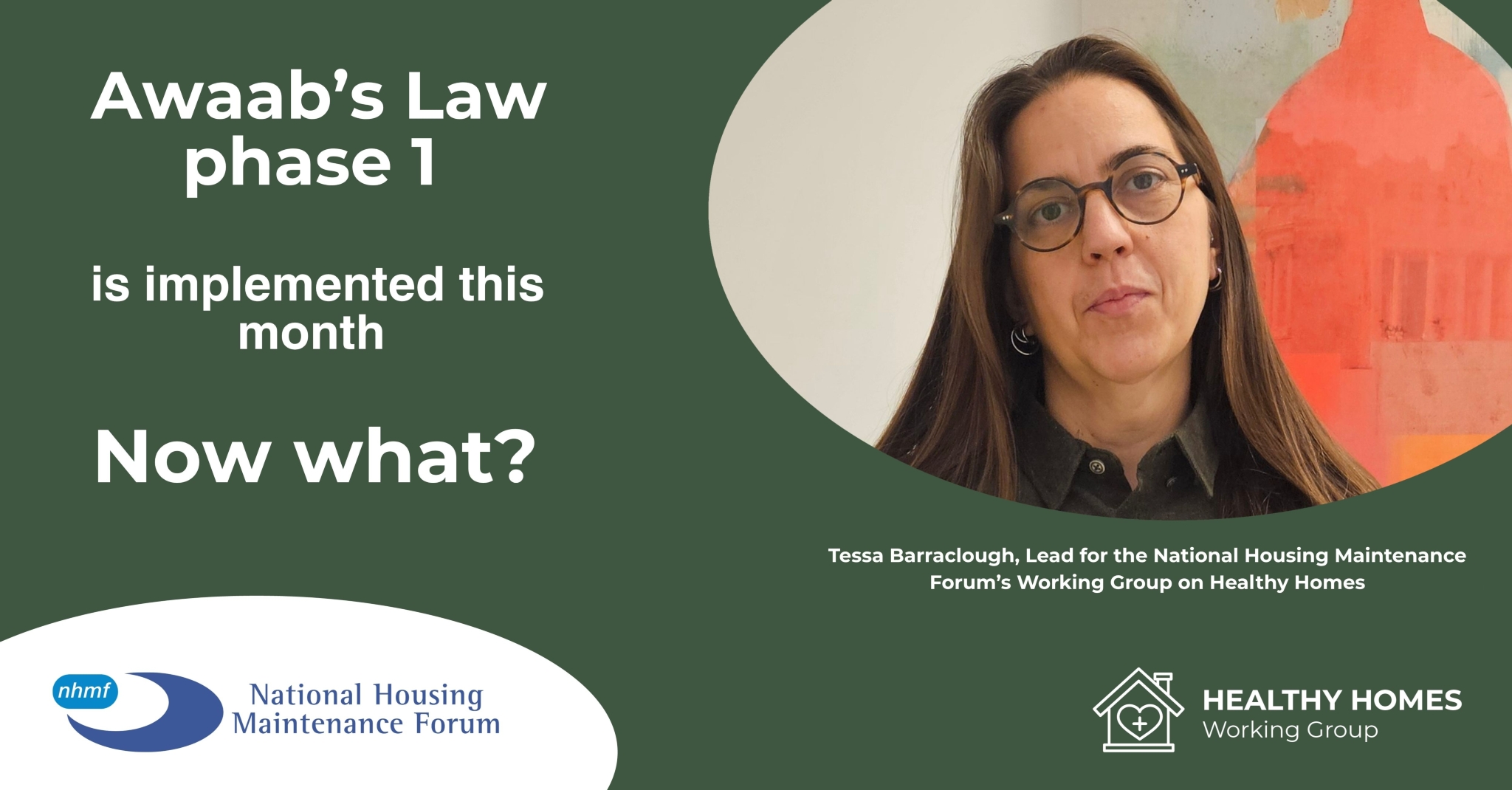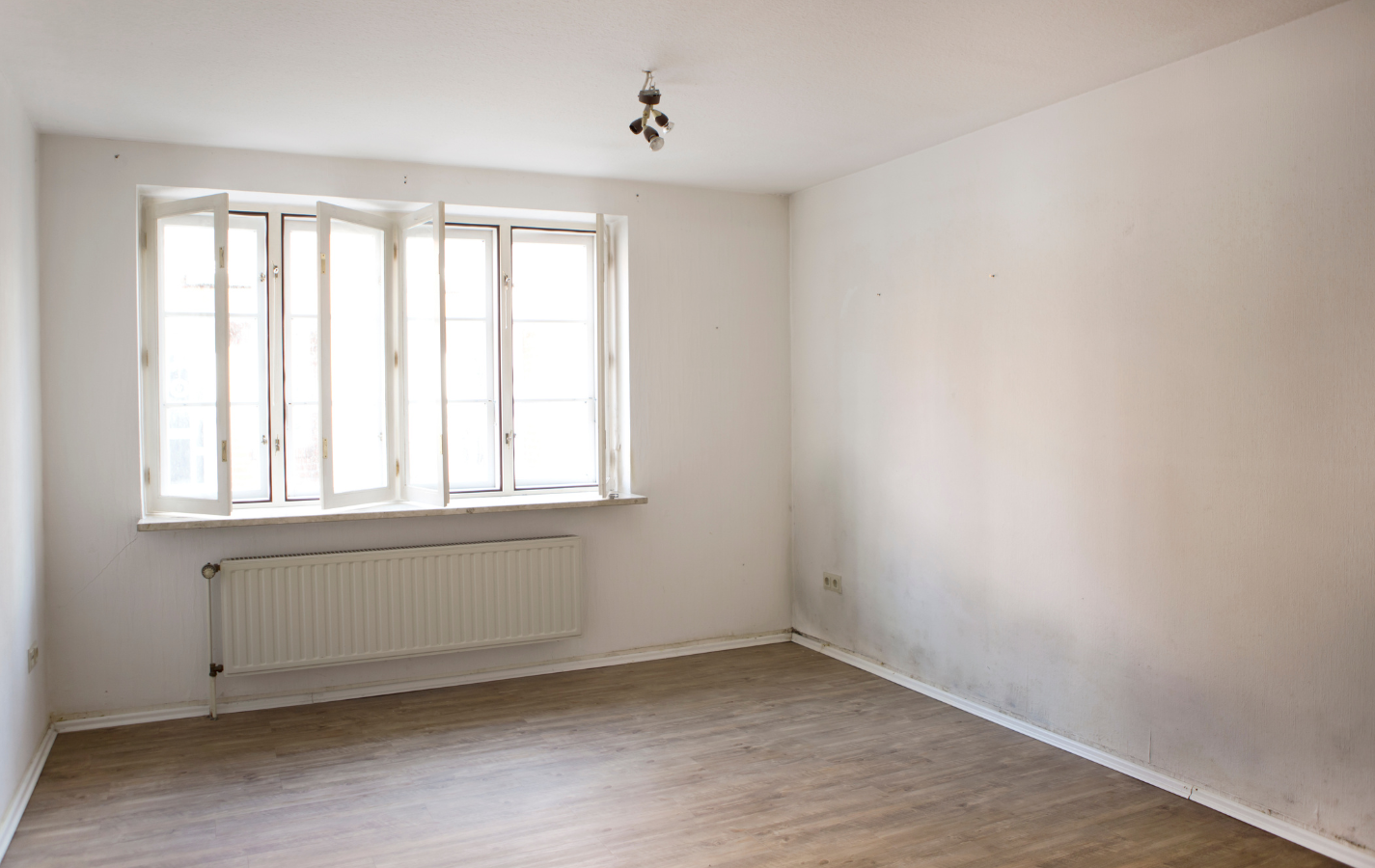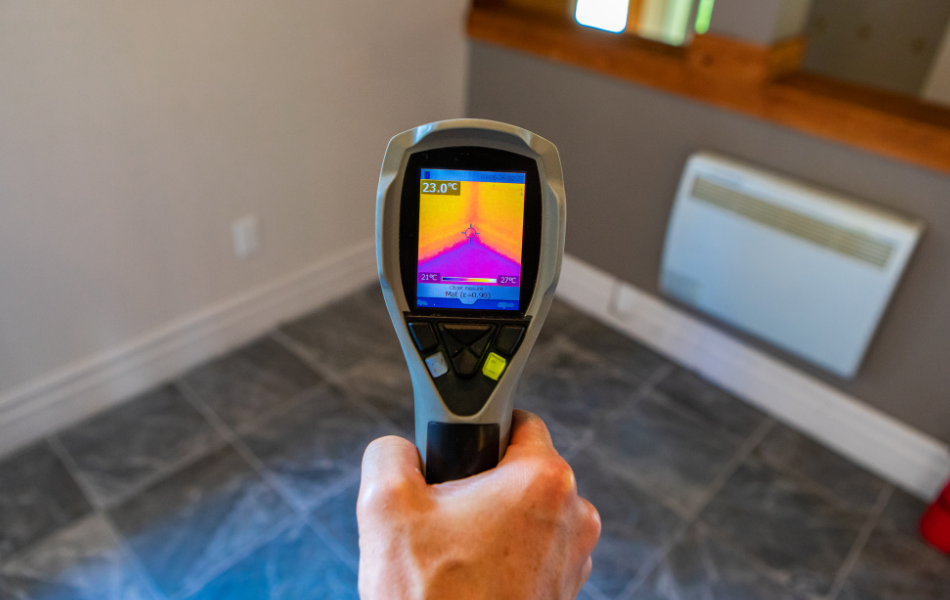Awaab’s Law phase 1 is implemented this month - Now what?
Tessa Barraclough, Lead for the National Housing Maintenance Forum (NHMF)'s Working Group on Healthy Homes, and Riverside’s Assistant Director for Asset Strategy and Sustainability, discusses how the UK Social Housing faces significant readiness gaps despite the clear requirements of phase 2 of Awaab’s Law.

The sad and avoidable death of Awaab Ishak as a result of prolonged exposure to damp and mould marked a milestone in the regulation of social housing, spurring Government, regulators and providers to take necessary action. With the implementation of Phase 1 of Awaab’s Law imminent, it feels like the right time to start talking about what happens after Awaab’s Law and how we can encourage best practice within the UK housing sector to ensure such a tragedy never happens again. At the moment, we are all looking towards the 27th of October, but what comes next in extending the scope of Awaab’s Law is equally challenging.
The Scale of Stage 2 Expansion
The Social Housing (Prescribed Requirements) Regulations 2025, laid before Parliament on 25 June 2025, confirm that Phase 2 will apply identical statutory timeframes to seven additional hazard categories. This represents a massive operational expansion from managing damp, mould and emergency repairs, to including diverse building conditions that can impact customers’ health.
The seven Phase 2 hazard categories for 2026 are: excess cold & heat, four types of falls (baths, level surfaces, stairs, and between levels), structural collapse, fire, electrical hazards and explosions, and three types of hygiene hazards. By 2027 28 HHSRS hazards will be covered.
The timescales remain stringent: 24 hours total for emergency hazards, 10 working days to investigate significant hazards, written summaries within 3 working days of investigation completion, and safety work completed within 5 working days. When properties cannot be made safe within these timeframes, landlords must provide suitable alternative accommodation at their expense.
Buildings and people are complex interactions that require a ‘test and learn’ mentality
The Housing Secretary emphasised that the Government will “closely monitor and evaluate the impact Awaab’s Law is having – the effectiveness of the processes put in place to implement it – and will clarify or adapt our approach to deliver the best outcomes if we need to.” Organisations need to be agile and able to respond to regulatory ‘fine tuning’ by orientating themselves toward continuous improvement through openness to learn and adapt. Buildings and people are after all complex interactions. Consistent in our objectives, but flexible in how we achieve them, we also need to be fully aware of the regulatory framework and how best to avoid the potential failures and penalties.
Sector Bodies Issue Stark Warnings
The disconnect between available guidance and actual readiness is particularly concerning. The Housing Ombudsman, National Housing Federation, and Chartered Institute of Housing have all published comprehensive Phase 2 guidance, yet these same bodies express serious concerns about sector preparedness.
Richard Blakeway from the Housing Ombudsman issued the starkest warnings in February 2025, stating that "some landlords are not taking full responsibility, communicating poorly and making basic errors." Most alarmingly, he noted that "around half of our casework still concerns damp and mould" despite years of focus on this single hazard. His assessment of Phase 2 readiness was blunt: "some landlords will face significant challenges."
The Ombudsman emphasised: "Landlords should not wait until the last moment to make changes but extend the discipline of Awaab's Law to other hazards as soon as possible." This recommendation to voluntarily expand practices before Phase 2 enforcement has not been widely adopted based on available evidence.
Technology Solutions Exist But Integration Challenges Remain
Multiple technology providers have developed systems specifically for Awaab's Law compliance, yet most existing Housing Management Systems were never designed for the timebound, multi-hazard case management that Phase 2 requires.
The core technology problem is that traditional HMS platforms operate in silos with separate systems for cases, repairs, and communications, requiring manual handoffs that cause delays. They lack real-time tracking across multiple concurrent hazard types and cannot automatically enforce working-day countdown timers from "the moment of becoming aware."
Financial and Legal Implications Exceed Government Estimates
The government's official impact assessment estimates Phase 1 costs to be £14.6 million per year over a ten-year appraisal period across the social housing sector. However, the sector strongly disputes these figures as significantly underestimating the true implementation burden, with no Phase 2 specific cost estimates published.
Law firms have issued clear warnings about compliance costs and legal exposure. The cost of non-compliance substantially exceeds compliance costs, with courts already awarding between £500 and £100,000+ per disrepair case depending on severity and duration.
Skills Gaps Threaten Implementation
Government guidance explicitly requires competent investigators with skills to determine whether hazards are significant or emergency across all hazard types. For Phase 2, investigators must understand thermal comfort assessment, fall hazard identification, structural integrity evaluation, electrical safety assessment, and hygiene hazard recognition.
Local authorities face particular workforce challenges, with the Local Government Association reporting that 74% of councils experience recruitment and retention difficulties, with skills shortages in planning, legal, environmental health, and finance.
Limited Evidence of Concrete Phase 2 Preparations
Despite guidance being available, much of it is unstructured and by no means comprehensive. In fact, some of the guidance is contradictory: e.g. for some hazards there is no agreed measure of failure, and both assessment of risk and elimination of the hazard can be contested. It’s no surprise that amidst this uncertainty, landlords can be reluctant to invest time and resources preparing for Phases 2 and 3 before the test and learn stages of Phase 1 have been successfully navigated.
Critical Recommendations for Action
As someone committed to ensuring the NHMF spreads best practices within the UK housing sector, certain preparation actions are essential now, regardless of how the framework evolves:
Extend Awaab's Law discipline to all Phase 2 hazards as soon as possible. The Housing Ombudsman explicitly urged organisations to treat October 2025-2026 as a practice period rather than waiting until Phase 2 enforcement begins.
Conduct comprehensive stock condition surveys specifically focused on Phase 2 hazards. Most providers have damp and mould data, but far fewer have systematic assessments of excess cold/heat risks, fall hazards, structural integrity concerns, electrical safety beyond required inspections, or hygiene hazard prevalence.
Ensure up to date information on the vulnerability of your tenants
The legislation requires action on hazards posing a "significant risk of harm". For Phase 2 hazards, determining this significance depends heavily on tenant vulnerability (e.g., fire risk or excess cold risk is higher for the elderly, children, or those with respiratory conditions like asthma or COPD). The government has confirmed that a formal doctor's note is not required to define a significant risk. This places the complete responsibility on the provider’s assessor training to integrate tenant-specific vulnerability data into the property hazard triage process, enabling rapid and legally defensible risk judgments based on HHSRS principles.
Robust Data Management essential for compliance
The requirement for written summaries within three working days of investigations will expose organisations with poor data management. Those without integrated systems linking repairs, tenant circumstances, and property conditions will struggle to meet deadlines and evidence of regulatory compliance.
This means IT systems and work practices need to be capable and utilised methodically to record, store and retrieve data regarding attempts to engage with tenants, access properties, adherence to timescales and any other information necessary for organisations to be assured they are correctly assessing and taking all reasonable steps to keep residents safe.
Build investigation capacity across all hazard types now. Waiting until 2026 to hire and train investigators guarantees insufficient capacity. Providers need competent investigators who can assess thermal comfort, identify fall risks, evaluate structural concerns, assess fire and electrical safety, and recognise sanitation hazards.
But critically, to support this work, all our frontline colleagues, any general team member entering residents’ properties or interacting with residents, should be trained to recognise and flag these Phase 2 hazards and communicate them accurately. Of course, investing in these universal ‘eyes and ears’ will require massive upskilling which needs to start sooner rather than later.
Continue to invest in diverse specialist contractor relationships. The sector will face contractor capacity constraints when Phase 2 begins if all providers simultaneously seek electrical engineers, heating specialists, structural engineers, and other specialists. It’s critical that in areas where such relationships don’t yet exist, landlords begin to secure them. It’s only through robust partnerships with service suppliers that we can manage the huge task ahead of us. We need them to be those ‘eyes and ears’ in our residents’ homes.
Success Indicators by 2027
By the time Awaab's Law fully extends to all HHSRS hazards in 2027, successful organisations will be able to demonstrate and action:
- Real-time property condition monitoring
- Integrated data systems with single customer views
- Proactive inspection regimes
- Embedded vulnerability assessments
- Zero tolerance for discriminatory attitudes
- Managed access protocols
- Multi-agency collaboration frameworks
Ultimately, success will be demonstrated through the supply of safe, healthy, warm, damp and mould free, well-ventilated homes, an objective that every single one of us working in social housing strives for every day.
The NHMF Healthy Homes Working Group remains committed to supporting the sector through this transformation, sharing best practices, developing guidance, and ensuring that lessons learnt benefit all social housing providers. Together, we can ensure that Awaab's legacy is a sector truly fit for purpose in protecting the health and safety of social housing residents.
We’re called Working Groups because that’s precisely what we’re doing – working, not just talking and meeting. If you’d like to join us working on behalf of creating a better social housing landscape by becoming a member of this Healthy Homes Working Group or the 6 other areas our Working Groups cover; Procurement, Building and Fire Safety, Net Zero, Technology, Training, Skills & Culture or Hammar regional please contact: Tessa.Barraclough@riverside.org.uk


